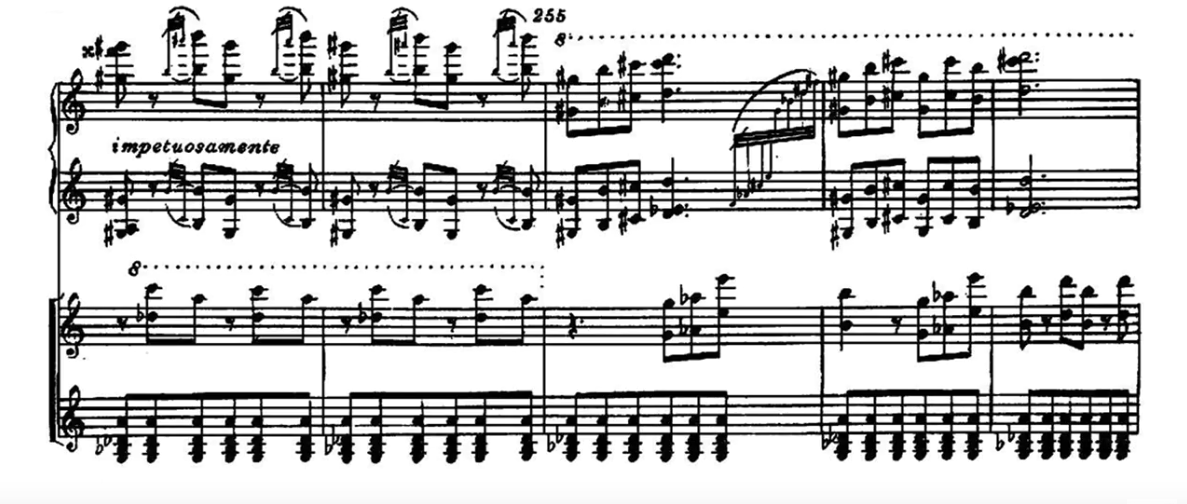As I was scrounging around for a new big blog topic, I thought, “Why not rank piano concertos?” I had already done sonatas, it seemed obvious, and there are some really great pieces out there. I especially wanted an excuse to discover new modern work.
But even just trying to get a reasonable sampling from major contemporary composers is an exercise in futility. Everyone has written a piano concerto. Some have written two or three. And listening to dozens of concertos is way more taxing on the ears than listening to sonatas. There’s just way more musical information hitting you at a given moment, the organization of material demands closer attention, and an average concerto runs longer than twenty minutes. My choices here barely scratch the surface.
I think the big takeaway here is that the piano concerto genre is still very much alive in 2019. Piano concertos seem to be the most often type of concerto performed, with many star-pianist advocates willing to tackle big premieres. So contemporary composers have an outlet to write large-scale works to show their skill in orchestral writing and provide a pianistic showcase. And they can be programmed on the first half of a program, so more conservative audiences still hang around for the core-rep symphony after intermission. It’s a win-win. And that’s why we have hundreds of these pieces lying around.
With this in mind, I’m starting this adventure not with the Classical era but with pieces written after 1960, to offset the phenomenon of performers seeming to ignore everything written after that arbitrary cutoff. Admittedly, there are reasons they ignore it. Some modern concertos don’t have practical two-piano reductions available (essential for concerto competitions), or would place ridiculous demands on a college-level orchestra. They often don’t have excerptable movements or clear divisions. And the piano parts tend to be…you know…hard. I tried to base my judging mostly on the pieces themselves, but a little bit on these practical factors since I’m trying to encourage changes to the repertoire.
A final note: I decided not to rank these. They all have their own unique character. Instead, here’s the alphabetical order for the first five:
William Bolcom – Piano Concerto (1976)
William Bolcom, a skillful polystylist, incorporated all sorts of American vernacular references into this piece. It was commissioned for the American Bicentennial in 1976, but his finished work was apparently intended as a cynical response to the lavish celebrations. The opening memorably pairs a slow walking-piano line with quasi-Baroque ornamentation, and the first movement has everything from modernist passagework to cheeky showbiz. The finale is an Ivesian stew of popular tunes.
Elliott Carter – Interventions (2007)
Elliott Carter wrote several works for piano and orchestra, with only one labeled a concerto. Interventions, which he wrote at age 100, is my favorite of the bunch. Carter can be one of the most difficult composers to appreciate (and I still struggle with a lot of his work), but here the textures are really transparent, making it easy to focus on details. The piano writing is fluid, impish, poetic. I hear some really nice muted romanticism in the string line that keeps appearing. And Carter’s sense of humor peeks out at some key moments. You might surprise yourself by how much you enjoy it.
John Corigliano – Piano Concerto (1968)
If you’re familiar with the Barber concerto (which you should be!) this might feel like a descendant to that piece. With a muscular sound and clearly drawn themes, this feels like a big American concerto. The first movement has some of the same beautiful dark lyricism I admire in Barber, and the finale unleashes the piano like a wild beast. I like the orchestral colors throughout, especially some of the percussive touches of xylophone and tambourine. The ending is a great fakeout that then sneaks up again to scare you. The whole piece is just hugely impressive.
Alberto Ginastera – Piano Concerto No. 1, Op. 28 (1961)
After the last note of the live performance in the video above, a man in the audience screams. Much has been made of that scream in the YouTube comments, but I think it’s the truest possible reaction to this piece. It’s just terrifically exciting. All manner of explosive piano writing is accompanied by a menacing, seething orchestra. As in Ginastera’s second piano concerto, the first movement is cast as a set of variations. I love the wispy chamber textures in the mischievous Scherzo. The bleak Adagissimo gives way to a pounding Toccata that recalls both Ginastera’s own First Sonata and the finale of Barber’s concerto.
György Ligeti – Concerto for Piano and Orchestra (1980)
Ligeti starts off with a rhythmic puzzle like you might hear in his piano etudes. The rhythmic complexity barely lets up over the course of this five-movement piece. Ensemble issues must be a nightmare; if I ever hear this live I’ll be holding my breath the whole time. That said, it’s incredible music. It really grooves, but unlike the grooves of, say, John Adams, there’s a sense that you’re dancing at the edge of a sheer drop. The sad, wretched slow movement builds to a big climax. Then Ligeti treats us to some more funky games: a perpetual-motion Vivace, a confrontational dialogue between the piano and orchestra, and another impossible groove machine for the finale. Like the best of Ligeti, the music just ends in a cutoff way, with the piano and xylophone running into oblivion.
Stay tuned for Part II, and the rest of the series!


Having difficulties with my tablet just now so I cannot listen to these. I do appreciate the time you’ve taken to give us some idea of what’s out there!
LikeLike
Thank you so much for linking my performance of the Bolcom concerto! It was a labor of love. 🙂
LikeLike